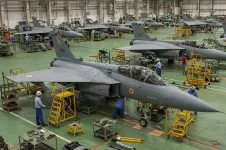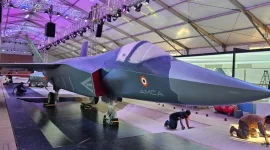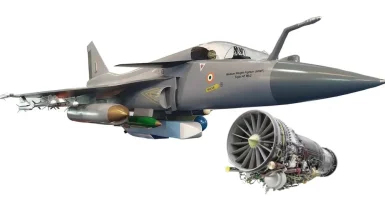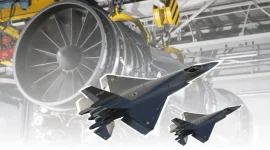- Views: 2K
- Replies: 18
India's landmark initiative to develop a homegrown fifth-generation fighter jet, the Advanced Medium Combat Aircraft (AMCA), is facing turbulence as private defence firms raise alarms over a perceived bias towards state-owned Hindustan Aeronautics Limited (HAL).
Despite government assurances of a level playing field, industry sources claim that the terms laid out in the initial tender documents effectively sideline them from meaningfully competing for the prestigious project.
The controversy centers on the Expression of Interest (EOI) issued on June 18, 2025, by the Aeronautical Development Agency (ADA).
This document was intended to kickstart a new era of public-private partnership (PPP) in Indian defence, a model approved by Defence Minister Rajnath Singh in May to fast-track the nation's most ambitious aviation project.
However, private companies argue the stringent eligibility criteria are tailor-made for HAL, which has historically held a monopoly on manufacturing fighter aircraft in India.
A primary point of contention for the private sector is a clause mandating that any bidding entity must be owned and controlled by resident Indian citizens.
This rule prevents Indian private firms, which often depend on technical collaborations with global Original Equipment Manufacturers (OEMs) for critical components and expertise, from forming joint ventures with foreign partners for this project.
"Even today, Indian companies manufacturing parts and components do so in collaboration with foreign OEMs," a source from the private industry highlighted, pointing to the deep-rooted need for international expertise in the high-tech aerospace sector.
Further compounding the issue, the EOI stipulates that all key leadership positions—including the CEO, CFO, and COO—must be held by resident Indian citizens.
Critics argue this restriction hampers the ability of private companies to hire globally-recognized talent to spearhead such a technologically complex venture.
Given these constraints, HAL's position as the frontrunner appears cemented. The public sector undertaking possesses decades of experience from producing aircraft like the Tejas Light Combat Aircraft and has been intrinsically involved in the AMCA's structural design.
Reports indicate that HAL has already received 24 responses from domestic companies to form a consortium, where it would hold a majority 50% stake, leaving four private partners with just 12.5% each—a structure that private players feel limits them to minor, subservient roles.
While HAL's experience is undisputed, its track record has also drawn scrutiny. Critics point to past delays in the delivery of the Tejas Mk1A fleet and other challenges as reasons to foster a more competitive environment.
Experienced aerospace and defence manufacturers like Tata Advanced Systems, Larsen & Toubro, and Bharat Forge are seen as capable contributors but are effectively stymied by the current tender rules.
The AMCA is a cornerstone of India's strategic push for self-reliance (Aatmanirbhar Bharat) in defence. The twin-engine stealth aircraft is being designed to possess advanced capabilities like supercruise, sensor fusion, and artificial intelligence-driven systems.
The project is critical for the Indian Air Force (IAF), which aims to induct seven squadrons, or approximately 126 of these jets, starting from 2035. An ambitious timeline targets the rollout of five prototypes by 2028-29, with the first flight scheduled for 2029.
The development of the AMCA has gained significant urgency due to the evolving security landscape in the region. China has already deployed its own fifth-generation fighter, the J-20, along the Line of Actual Control, and Pakistan is reportedly pursuing the acquisition of J-35A stealth fighters.
The IAF is currently operating with only 31 fighter squadrons against a sanctioned strength of 42, making the timely induction of modern aircraft a matter of national security.
Private industry advocates warn that by limiting genuine competition and access to global innovation, the current approach risks not only stifling the potential of India's private defence sector but could also jeopardize the ambitious and strategically vital timeline of the AMCA program itself.




